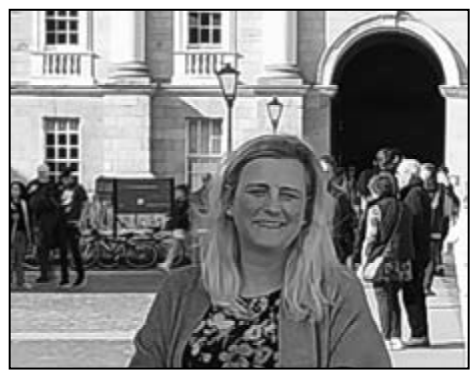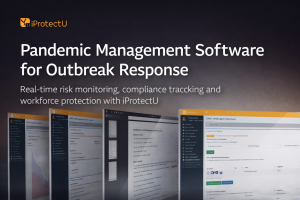iProtectU Feature in the Irish Health and Safety Review
"Since we implemented iProtectU’s software in 2020, we have become a lot more efficient and streamlined.”
Dr Katharine Murray
For the full story by Margaret Kirby at IRN News please visit Irelands Health and Safety Review.
https://www.healthandsafetyreview.ie/article/8334

Dr Katharine Murray
Head of safety at Trinity College Dublin
Feature Overview : “You name a hazard, we have it”
Overview from the Full Feature story by Margaret Kirby at IRN News – Health and Safety Review.
Standing at the iconic bell tower in the middle of this historic campus, it is quickly apparent from the groups of passing tourists, crowds of students, and the variety of accents and languages within earshot, that this is one busy campus. “You name a hazard, we have it”, says Katharine, as we walk through the grounds. We pass the 18th century Old Library, which houses the historic Book of Kells, the rugby pitches where spectators are watching a student match, and towards Pearse Street Dart station, where the safety office is located within a modern glass-fronted building.
Katherine explains how safety is managed in such a large and complex site, acknowledging the support she has from a fantastic team. As head of safety, she reports into the Risk and Compliance Committee in the college. “There are also three specialist safety committees, including biological, chemical and radiological. The college is licensed by the Environmental Protection Agency (EPA) with regard to ionising radiation sources, for example x-rays in radiotherapy”, she says. There is also an administration and support services safety committee, which supports the academic works.
The college has three faculties: arts, humanities and social sciences; engineering, mathematics and science; and health sciences. Each faculty is made up of a number of schools, and each school has its own safety officer, which is a parttime role for the appointed person. In addition to this, there is a dedicated radiological safety officer, biological safety officer, chemical safety officer and fire safety officer.
Heart Saver Training
As we enter the third floor where the safety team are based, we pass the meeting room where an Automated External Defibrillator (AED) course has just finished. I am greeted by Trinity’s fire safety officer, Cathal Ryan, who enthusiastically tells me that the college is an affiliated training site for the Irish Heart Foundation. “We run the Heart Saver AED course for staff and students on site”, he explains. “ It’s free, and it gives people the confidence to be able to respond in the early stages of a crisis”, he says.
At present, they are upskilling other staff on site to become instructors, which means they will be able to bring the training back to their own departments, and deliver it to their colleagues.
“We have 38 defibrillators in the college”, says Cathal, adding: “It’s great to have instructors train their peers on how to use them in the event of an emergency”, he says.
"Managing the AEDs has also become easier since the college implemented iProtectU’s health, safety and compliance software. “The AED’s are checked weekly and the information is fed into the software app which gives an immediate oversight of compliance levels".
Cathal Ryan
As we talk about other aspects of life and fire safety, Katharine highlights the extensive work that has gone into organising and running fire drills on site, and providing training for new students and staff on fire safety. Cathal adds that the college now has a 45-minute online course, as well as physical fire training. “We have a simulator, where we can demonstrate a real fire, which is particularly geared towards those more at risk, including laboratory workers, demonstrators, facility staff, security, attendants and maintenance”, he adds.
Chemical Safety
“Our biggest challenge is working with the unknown”, says Cathal, referring to the vast amount of chemicals used in research and studies, as well as the historical nature of the buildings on site. “This is something that we have to manage carefully”, expands Katharine, who adds that there are up to 400 laboratories on site. “We have over 47,000 chemicals here, used by laboratory staff and researchers. One of our challenges has been the management of old and redundant chemicals, which may be left behind when someone leaves”, explains Katharine.
Training
Recording and tracking training for their staff has become less complicated also, with the iProtectU safety software they use. Staff training is recorded on this, and there are a number of online modules available on this platform.
“Prior to Covid-19, most of the training was delivered in person”, says Katharine, “but with the use of the online training we have definitely become more efficient and have a wider reach with training”, she adds. Manual handling training is an example of this. The college has the theory aspect available online, which can be followed up by a supplemental practical course.
“Since we implemented iProtectU’s software in 2020, we have become a lot more efficient and streamlined”.
Dr Katharine Murray
For the full story by Margaret Kirby at IRN News please visit Irelands Health and Safety Review.
https://www.healthandsafetyreview.ie/article/8334








